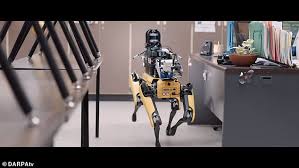
Breaking News
 Catching Up with Candace – Her Meeting with Erika Kirk and Interview with Military Whistleblower
Catching Up with Candace – Her Meeting with Erika Kirk and Interview with Military Whistleblower
 Brown University Shooter Found Dead, May Be Linked to Murdered MIT Professor
Brown University Shooter Found Dead, May Be Linked to Murdered MIT Professor
 The last time a president installed a "shadow Fed chair," inflation hit 12%.
The last time a president installed a "shadow Fed chair," inflation hit 12%.
 FULL SPEECH: Tucker on the America First Movement & New "Deplatforming" Agenda
FULL SPEECH: Tucker on the America First Movement & New "Deplatforming" Agenda
Top Tech News
 This tiny dev board is packed with features for ambitious makers
This tiny dev board is packed with features for ambitious makers
 Scientists Discover Gel to Regrow Tooth Enamel
Scientists Discover Gel to Regrow Tooth Enamel
 Vitamin C and Dandelion Root Killing Cancer Cells -- as Former CDC Director Calls for COVID-19...
Vitamin C and Dandelion Root Killing Cancer Cells -- as Former CDC Director Calls for COVID-19...
 Galactic Brain: US firm plans space-based data centers, power grid to challenge China
Galactic Brain: US firm plans space-based data centers, power grid to challenge China
 A microbial cleanup for glyphosate just earned a patent. Here's why that matters
A microbial cleanup for glyphosate just earned a patent. Here's why that matters
 Japan Breaks Internet Speed Record with 5 Million Times Faster Data Transfer
Japan Breaks Internet Speed Record with 5 Million Times Faster Data Transfer
 Advanced Propulsion Resources Part 1 of 2
Advanced Propulsion Resources Part 1 of 2
 PulsarFusion a forward-thinking UK aerospace company, is pushing the boundaries of space travel...
PulsarFusion a forward-thinking UK aerospace company, is pushing the boundaries of space travel...
 Dinky little laser box throws big-screen entertainment from inches away
Dinky little laser box throws big-screen entertainment from inches away
 'World's first' sodium-ion flashlight shines bright even at -40 ºF
'World's first' sodium-ion flashlight shines bright even at -40 ºF
Military robots win search and rescue competition as they search for survivors in...

Scientists convened on an unfinished underground power plant in Elma, Washington to test a group of autonomous military robots in a simulated disaster scenario.
The scientists weren't taking part in an experiment but a competition sponsored by the Defense Advanced Research Projects Agency (DARPA), as part of its efforts to develop a range of autonomous robots to fill a variety of military roles.
The winning team came from NASA's Jet Propulsion Laboratory, a 60 person crew that oversaw a group of 12 robots they'd programmed through an initiative called Collaborative SubTerranean Autonomous Robots (CoSTAR).
'The goal is to develop software for our robots that lets them decide how to proceed as they face new surprises,' JPL's Ali Agha said.
'These robots are highly autonomous and for the most part make decisions without human intervention.'
CoSTAR's robots autonomously explored the underground plant, which had been designed to simulate an urban disaster environment with a carbon dioxide leak and warm air vent.



